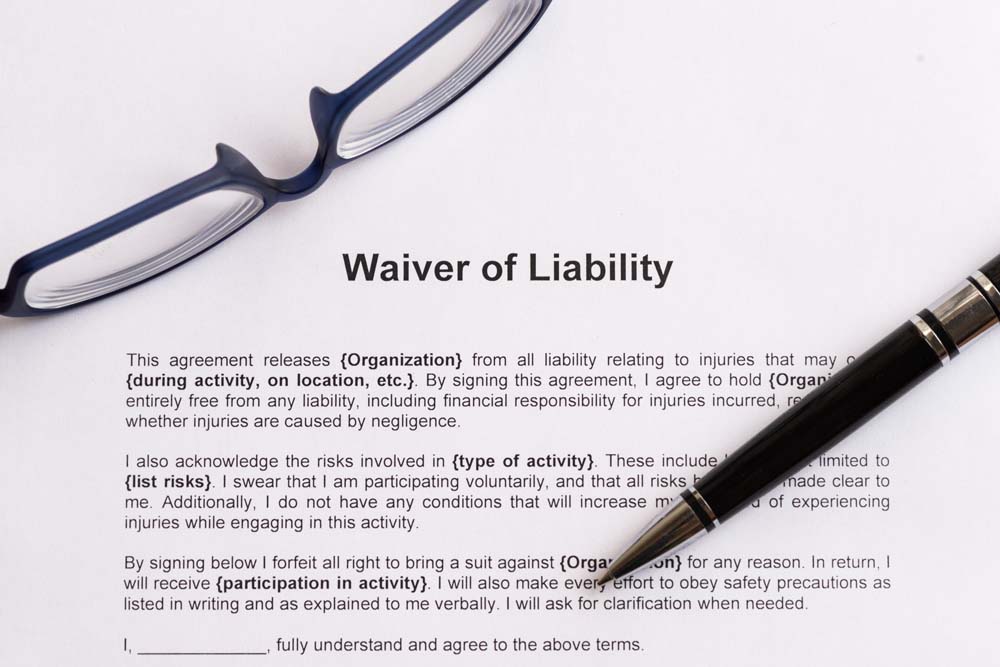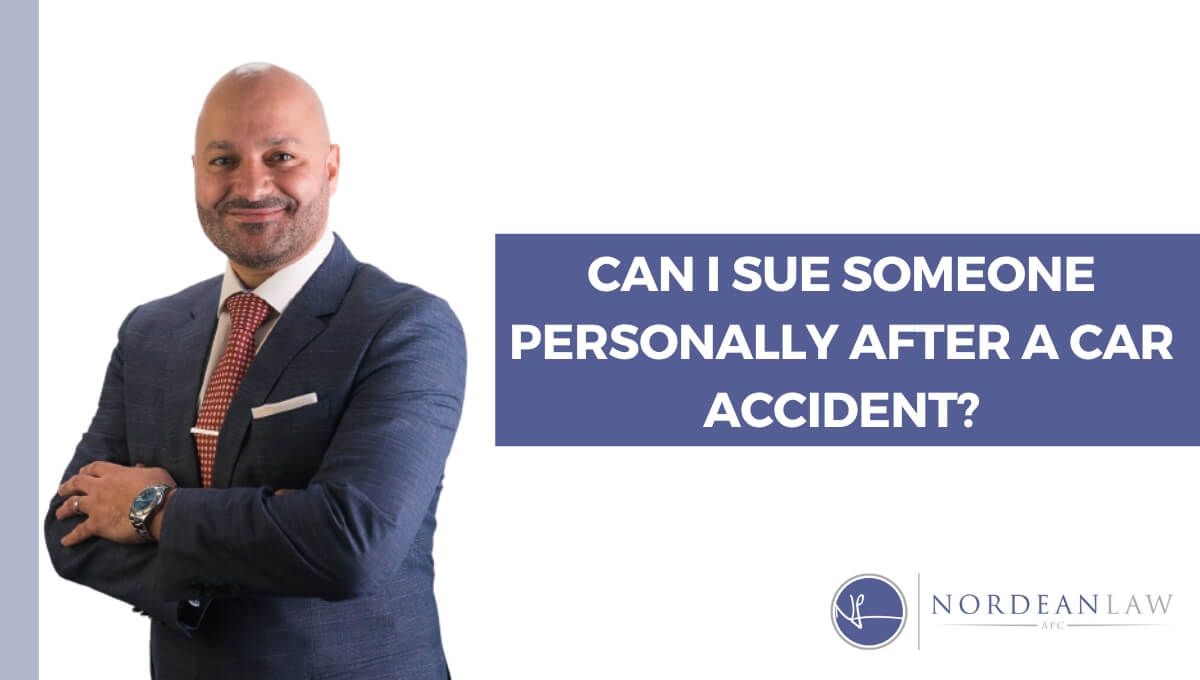Can you sue a business owner personally? The answer isn’t a simple yes or no. It hinges on several critical factors, including the type of business structure—sole proprietorship, partnership, LLC, or corporation—and the nature of the alleged wrongdoing. Understanding personal liability is crucial for both business owners seeking to protect their assets and individuals considering legal action against a business. This guide delves into the complexities of personal liability, exploring the legal landscape and providing insights into when a business owner’s personal wealth might be at risk.
We’ll examine different legal claims, such as breach of contract, negligence, and fraud, and analyze how a business owner’s actions, or inactions, can lead to personal liability. We’ll also discuss the legal protections afforded by various business structures and the concept of “piercing the corporate veil,” a situation where courts disregard the legal separation between a business and its owner. Real-world case studies will illustrate the practical implications of these legal principles, offering valuable lessons for both business owners and those considering legal recourse.
Personal Liability of Business Owners: Can You Sue A Business Owner Personally

Understanding personal liability is crucial for anyone considering starting a business. The legal structure you choose significantly impacts the extent to which your personal assets are at risk for business debts or liabilities. This section will explore the differences in liability exposure across various business structures.
Liability Differences Across Business Structures
The level of personal liability a business owner faces varies dramatically depending on the chosen business structure. Sole proprietorships offer the least protection, while corporations generally provide the most. Partnerships and LLCs fall somewhere in between, with variations depending on the specific type of partnership or LLC.
Examples of Personal Asset Risk
In several situations, a business owner’s personal assets can be at risk. For example, a sole proprietor who incurs business debt may be held personally liable for that debt, even if it means selling their personal home or car to satisfy the debt. Similarly, a partner in a general partnership could be held personally responsible for the actions or debts of other partners. If a lawsuit is filed against an LLC and the court “pierces the corporate veil,” the owners’ personal assets may be at risk. This is more likely if the LLC has commingled personal and business funds, or if it has failed to maintain proper corporate formalities.
Comparative Analysis of Legal Protections
| Business Structure | Personal Liability | Legal Protections | Example |
|---|---|---|---|
| Sole Proprietorship | Unlimited | Minimal | Owner’s personal assets are at risk for business debts. |
| Partnership (General) | Unlimited | Limited; partners share liability. | One partner’s debt can affect all partners’ personal assets. |
| LLC (Limited Liability Company) | Limited | Generally protects personal assets; exceptions exist. | Personal assets are usually protected from business debts, unless the corporate veil is pierced. |
| Corporation (S Corp or C Corp) | Limited | Strongest protection; separate legal entity. | Shareholders’ personal assets are generally protected from business debts. |
Piercing the Corporate Veil
Piercing the corporate veil is a legal action where a court disregards the limited liability afforded to a corporation or LLC, holding the owners personally liable for the business’s debts or actions. This typically occurs when there’s evidence of fraud, commingling of personal and business funds, inadequate capitalization, or failure to maintain corporate formalities. For instance, if an LLC owner uses the company’s funds for personal expenses without proper documentation, a court might pierce the veil and hold the owner personally responsible for the business’s debts. The same principle applies to corporations that fail to maintain separate bank accounts or conduct business in a formal manner.
Types of Lawsuits Against Business Owners
Business owners, while shielded by the corporate structure to some extent, are not always immune from personal liability. Various legal actions can target them directly, depending on the circumstances surrounding the business’s actions and the owner’s involvement. Understanding the common grounds for such lawsuits and the elements needed to prove liability is crucial for both business owners and those seeking legal recourse.
Common Legal Grounds for Personal Liability
Several legal grounds commonly lead to lawsuits against business owners personally. These typically involve situations where the owner’s actions or inactions directly contribute to the harm suffered by another party. The most frequent grounds include breach of contract, negligence, and fraud. Successful lawsuits require proving specific elements for each claim.
Elements of a Successful Lawsuit
To successfully sue a business owner personally, the plaintiff must prove specific elements depending on the type of claim. For instance, a breach of contract claim requires demonstrating the existence of a valid contract, the defendant’s breach of that contract, and resulting damages. Negligence claims necessitate proving the defendant owed a duty of care, breached that duty, causing the plaintiff foreseeable harm. Fraud claims demand proof of a misrepresentation of a material fact, intent to deceive, reliance on the misrepresentation by the plaintiff, and resulting damages. The burden of proof lies with the plaintiff in each case.
Potential Defenses for Business Owners
Business owners facing lawsuits have several potential defenses. These include demonstrating that the actions were within the scope of legitimate business operations and not personally negligent or fraudulent. They can also argue that the plaintiff failed to prove the necessary elements of the claim, such as causation or damages. Limited liability, if applicable and properly structured, can significantly reduce personal exposure. Furthermore, demonstrating compliance with relevant laws and regulations can strengthen a defense. Finally, a business owner might argue that another party is responsible for the damages, such as an employee acting outside their scope of employment.
Examples of Actions Leading to Personal Liability
The following examples illustrate actions by business owners that could lead to personal liability, categorized by legal claim:
Breach of Contract
- A business owner personally guarantees a loan for the business and fails to repay it.
- A sole proprietor enters into a contract with a client and fails to fulfill their obligations under the agreement.
- A business owner signs a contract on behalf of the business without the proper authority, leading to a breach.
Negligence
- A business owner fails to maintain safe working conditions, resulting in an employee injury.
- A business owner negligently operates equipment, causing property damage to a third party.
- A business owner fails to adequately warn customers of a known hazard on their property, leading to an injury.
Fraud
- A business owner makes false representations about the financial health of their business to secure a loan.
- A business owner engages in deceptive advertising practices, misleading customers about their products or services.
- A business owner knowingly sells defective products without disclosing the defects to consumers.
Factors Influencing Personal Liability

Several factors significantly influence a business owner’s personal liability. Understanding these factors is crucial for mitigating risk and protecting personal assets. The interplay between the type of action, the presence of insurance, the owner’s actions, and the use of personal guarantees all contribute to the ultimate determination of liability.
Intentional Versus Negligent Actions
Intentional actions, such as fraud or breach of contract, generally lead to a higher likelihood of personal liability than negligent actions. With intentional acts, the business owner knowingly and willingly engages in conduct that causes harm. Courts are more likely to pierce the corporate veil and hold the owner personally responsible in these cases. Negligent actions, on the other hand, involve unintentional harm resulting from a failure to exercise reasonable care. While negligence can still result in personal liability, the burden of proof is higher, and the damages awarded may be less substantial. For example, intentionally misrepresenting a product’s capabilities is more likely to result in personal liability than accidentally overlooking a safety hazard that subsequently causes injury.
The Role of Insurance in Mitigating Personal Liability
Insurance plays a vital role in mitigating personal liability risks. Various types of insurance, such as general liability insurance, professional liability insurance (errors and omissions), and umbrella liability insurance, can protect business owners from financial losses arising from lawsuits. These policies cover legal fees, settlements, and judgments up to the policy limits. However, it’s crucial to note that insurance policies do not cover all potential liabilities, and inadequate coverage can leave business owners exposed to significant personal financial risk. For instance, a general liability policy might not cover intentional acts, requiring separate insurance coverage.
Impact of Business Owner’s Actions (or Inactions)
A business owner’s actions, or lack thereof, directly influence the likelihood of personal liability. Failing to maintain proper accounting practices, neglecting safety regulations, or engaging in unethical business practices significantly increase the risk. Conversely, proactive measures such as implementing robust safety protocols, adhering to legal and ethical standards, and maintaining meticulous records can significantly reduce the chances of personal liability. For example, a business owner who fails to adequately train employees on safe handling of machinery could be held personally liable for injuries resulting from employee negligence.
Situations Where Personal Guarantees Impact Liability
Personal guarantees significantly increase a business owner’s personal liability. A personal guarantee is a commitment made by the business owner to repay a business debt if the business itself fails to do so. This is commonly seen in loan agreements or lease agreements. If the business defaults, the lender or lessor can pursue the business owner personally for the outstanding debt. This exposes the owner’s personal assets, such as their home or savings, to seizure. For example, if a small business owner guarantees a loan for their company and the company subsequently fails, the lender can pursue the owner for the remaining debt.
Decision-Making Process for Determining Personal Liability
A flowchart depicting the decision-making process for determining personal liability could be constructed as follows:
[Diagram Description: The flowchart would begin with a central question: “Was there harm caused?”. A “Yes” branch would lead to another question: “Was the action intentional or negligent?”. A “Yes” to intentional leads to a high likelihood of personal liability. A “Yes” to negligent leads to a question: “Was there sufficient insurance coverage?”. A “Yes” would lead to lower likelihood of personal liability, while a “No” would lead to a higher likelihood. A “No” to the initial question of harm caused would result in no personal liability. Each decision point would have connecting arrows leading to the next question or outcome.]
Legal Processes and Procedures

Suing a business owner personally requires navigating a complex legal landscape. Understanding the steps involved, from filing the lawsuit to presenting evidence in court, is crucial for a successful outcome. This section details the procedural aspects of such litigation, providing a roadmap for plaintiffs.
Filing a Lawsuit Against a Business Owner Personally, Can you sue a business owner personally
Initiating a lawsuit involves drafting a formal complaint outlining the claims against the business owner. This document must clearly state the grounds for the lawsuit, the damages suffered, and the relief sought. The complaint is then filed with the appropriate court, usually determined by the location of the business or the incident in question. Jurisdictional rules vary by state and sometimes even by county, so consulting an attorney is highly recommended to ensure proper filing. The court will assign a case number and officially commence the legal proceedings. Failure to correctly file can result in delays or dismissal of the case.
Serving Legal Documents to a Business Owner
Once the lawsuit is filed, the next step is serving the defendant (the business owner) with a copy of the complaint and summons. This formal notification informs the defendant of the lawsuit and requires them to respond within a specified timeframe. Service can be accomplished in various ways, including personal service (directly handing the documents to the defendant), substituted service (leaving the documents with a responsible adult at the defendant’s residence or place of business), or service by mail, depending on the jurisdiction and applicable rules. Proof of service, usually an affidavit from the process server, must be filed with the court to confirm proper notification. Improper service can lead to the dismissal of the case.
Stages of Litigation: Discovery and Trial
Litigation typically progresses through several stages. Discovery is a critical phase where both sides gather information relevant to the case. This involves interrogatories (written questions), depositions (oral testimony under oath), requests for documents (e.g., contracts, emails, financial records), and requests for admissions (statements of fact). The goal is to uncover evidence supporting each party’s claims and defenses. This phase can be lengthy and involves careful documentation and strategy. Following discovery, the case may proceed to trial, where the evidence is presented before a judge or jury.
Examples of Evidence in Lawsuits Against Business Owners
Evidence plays a vital role in determining the outcome of a lawsuit. Common types of evidence used in lawsuits against business owners include contracts demonstrating agreements and obligations, emails showing communications and intent, financial records illustrating profits, losses, or assets, and witness testimony providing firsthand accounts of events. Physical evidence, such as damaged goods or property, may also be presented. The admissibility of evidence depends on its relevance and authenticity, and the rules of evidence vary by jurisdiction. Proper authentication and chain of custody are essential for ensuring evidence is considered credible.
A Step-by-Step Guide to Navigating the Legal Process for Plaintiffs
- Consult an Attorney: Seek legal counsel early in the process to assess your case and understand your options.
- Gather Evidence: Collect all relevant documents, communications, and other evidence supporting your claims.
- File a Complaint: Draft and file a formal complaint with the appropriate court.
- Serve the Defendant: Ensure proper service of the complaint and summons on the business owner.
- Participate in Discovery: Cooperate fully with discovery requests while strategically protecting your interests.
- Prepare for Trial: If the case proceeds to trial, work closely with your attorney to prepare your case and present your evidence effectively.
- Attend Court Hearings and Trial: Be present at all scheduled court appearances.
Illustrative Case Studies
Understanding the nuances of personal liability requires examining real-world examples. The following case studies illustrate scenarios where business owners faced both successful and unsuccessful lawsuits, highlighting the crucial factors determining personal liability.
Case Study 1: Successful Lawsuit Against a Sole Proprietor
This case involves Sarah Miller, a sole proprietor running a bakery called “Miller’s Delights.” A customer, John Smith, suffered severe allergic reactions after consuming a pastry containing undeclared nuts. Smith sued Miller for negligence and breach of implied warranty of merchantability. The business structure, a sole proprietorship, meant Miller’s personal assets were directly exposed to liability. The key evidence presented included Smith’s medical records documenting the allergic reaction, testimony from witnesses confirming the lack of nut allergen warnings on the pastry packaging, and expert testimony establishing the bakery’s failure to adhere to standard food safety protocols. The court found Miller liable, ruling that her negligence directly caused Smith’s injuries. The judgment included compensatory damages for Smith’s medical expenses and pain and suffering, as well as punitive damages to reflect the severity of Miller’s negligence. Miller’s personal assets, including her house and savings, were seized to satisfy the judgment.
Case Study 2: Limited Liability Company (LLC) Protects Owner from Personal Liability
In contrast, consider the case of David Lee, the owner of “Lee’s Landscaping,” an LLC. A client, Jane Doe, alleged that Lee’s Landscaping damaged her property during a landscaping project. Doe sued both Lee’s Landscaping and David Lee personally. The key difference here lies in the business structure: Lee’s Landscaping operated as an LLC, providing Lee with limited liability protection. While Doe presented evidence of property damage, she failed to prove that Lee personally acted negligently or committed any wrongdoing beyond the scope of his business operations. The court dismissed the claim against Lee personally, ruling that his personal assets were protected by the LLC’s legal structure. The LLC’s insurance covered the damages to Doe’s property, preventing Lee from suffering any personal financial losses. This case highlights the effectiveness of choosing the appropriate business structure to mitigate personal liability risks.






